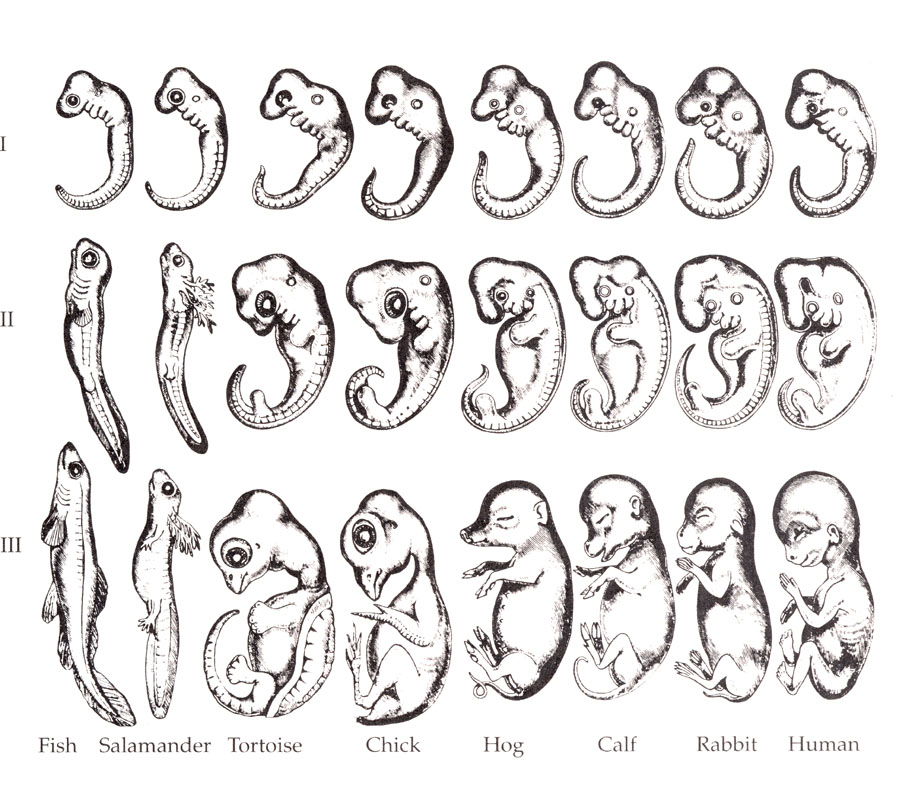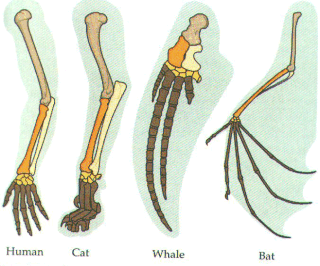
Biological Evolution: Decent with modifications, more specifically heritable modifications. New species descend from ancestral species by an accumulation of modifications as populations adapt to new environments.

Evidence for Evolution: There has been vast amounts in favor of a common decent which has been compiled over the years here is a brief summary of some of the main lines of evidence:
Comparative anatomy: It is possible to see a progression in complexity over time throughout the animal kingdom in structures. In other words, despite the differences in a system such as the circulatory system in many animals, it is not difficult to reconcile these differences or to view a progression of how the system evolved. Earlier organisms such as mollusks pump a blood-like fluid called hemocoel with a rudimentary heart. The inefficiency of this model due to the fact that the oxygenated and deoxygenated fluid can not be separated, favored, an adaptation which would enclose the fluid into a vessel was selected for. The actual fluid evolved into blood by having first molecules which carried oxygen and then cells which specifically contained these molecules. Each of these steps increased efficiency and can be seen in different animals, for example arthropods still have an open circulatory system. Another important piece of evidence in comparative anatomy is that of vestigal structures. These are structures found in animals that have no functions and are merely remnants of evolution. An example of this is that often times, whales are born with femurs (leg bones) despite the fact that they are marine, due, to their evolution from a land-living ancestor (probably bovine). Another example would be the human appendix which is thought to be a vestigal caecum (an organ found in many herbivores which helps digest plant material).
Comparative embryology: The idea that "ontogeny recapitulates phylogeny", suggested by Ernst Haeckel in 1866, refers to the idea that different stages in early development correlate with the adult form of the organism's ancestors. For example, in humans, gill slits (not functional) are visible in early development which indicates fish as an ancestor. Animals in early development look extremely similar, as development progresses, they begin to diverge in appearance., The thought is that the earlier that divergence occurs, the more distant the relation. Below is a drawing by Haeckel which depicts development of several animals.

Comparative biochemistry: The biochemical make-up of most animals is remarkably similar. Certain molecules such as Cytochrome C which is used in cellular respiration is almost identical in vastly different animals.
Fossil record: Remains found in sedimentary rock write a story of the history of the earth. Intermediate forms of animals have been discovered which illustrates the changing forms of animals and therefore common decent.
Microevolution: Evolution can be seen on a small scale in many everyday examples. For instance, pesticide resistance in many insect species: A pesticide will first be introduced with good results perhaps destroying 99% of the insects. Subsequent usage of this insecticide will then be display reduced effectiveness due to the natural selection of the 1% of survivors from the first spraying. Another simple example of evolution can be seen just looking at bacteria on a culture in the lab. If antibiotics are placed on the culture of bacteria, at first there will be no growth or colonies near the antibiotic, but in subsequent generations the bacteria will move closer and closer to the antibiotic which shows that it is resistant to its effects.
Homology: Similar structures due to a common ancestry. As seen below, the structures which are seen are utilized in different ways yet are all similar structurally. This is evidence for common ancestry because the best way to build a bat's wing is not also the best way to build a whale's flipper.

This page was made for Honors 210, a course offered at Monmouth College